|
||||||||||
|
|
||||||||||
|
||||||||||
|
|
||||||||||

The vehicle discovered in the Middle Eastern country Bahrain is not an orbiter but a full-scale test vehicle. Several of these prototypes and mock-ups were built during the early 1980s to develop and test the design and operational procedures to be used on the actual spaceworthy orbiters. One of these test vehicles has led a particularly interesting life that has taken it to some rather far off lands. This craft was officially called the 0.02 prototype or the OK-GLI aerodynamic flight test vehicle, but it is better known as the "Analog Buran" or Buran analogue."
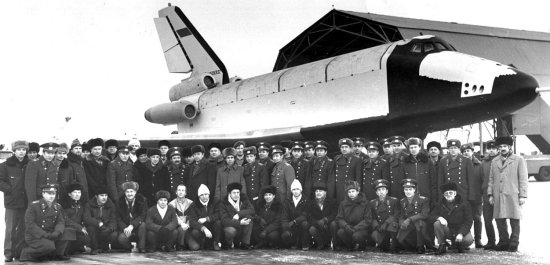
The Analog Buran was an aircraft that was not capable of traveling into space. The vehicle was built to fly at low speeds within the atmosphere to conduct landing and taxi tests at a conventional runway. This unique OK-GLI fulfilled a similar purpose as the American orbiter prototype Enterprise. The Enterprise was purely a glider carried to altitude and launched from a Boeing 747 carrier. The Analog Buran, on the other hand, was equipped with four jet engines fed by a large fuel tank located in the payload bay. These engines gave the vehicle the ability to take off and climb under its own power. Once at altitude, the engines could be disengaged and the test vehicle would glide back to Earth to make an unpowered landing. The Analog Buran made these repeated landings to collect data for the development of an autopilot and automated landing system. The automatic landing system was later successfully demonstrated on the spaceworthy Buran orbiter during its unmanned flight.

Analog Buran flew from 1985 to 1988 and completed 25 test flights before the airframe was considered worn out. Once retired, the OK-GLI remained stored at the Zhukovsky flight test center near Moscow where it was rolled out for display at the occasional air show.
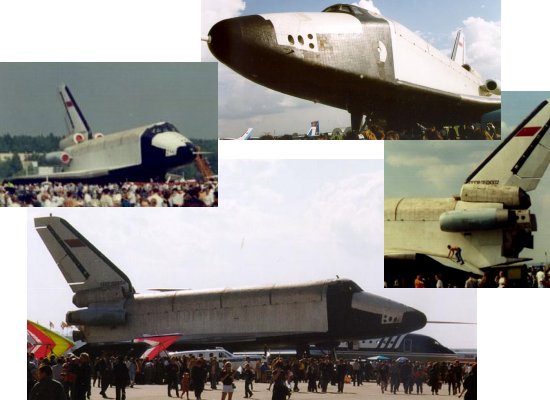
Following the collapse of the Soviet Union, the new Russian government retained most remnants of the Buran program. The Buran orbiter, a second orbiter under final assembly, and various test assets had been stored at Baikonur, but these were eventually traded to Kazakhstan to cover unpaid bills Russia owed for continued use of the Baikonur launch facilities. The Analog Buran remained in Russia where it became the property of the NPO Molniya design bureau that had originally built the test vehicle.
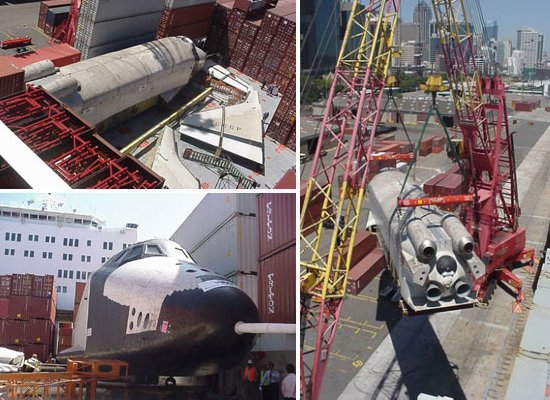
After its appearance at the MAKS air show in 2000, NPO Molniya sold Analog Buran to an Australian company called the Buran Space Corporation (BSC). Chaired by Paul Scully-Power, a former Australian astronaut, BSC hoped to turn the 0.02 test vehicle into a tourist attraction. The wings and tail of the Analog Buran were removed from the fuselage and the components transported to Darling Harbour in Sydney. Upon reassembly, OK-GLI was put on display in a temporary enclosure for the 2000 Olympics in Sydney.
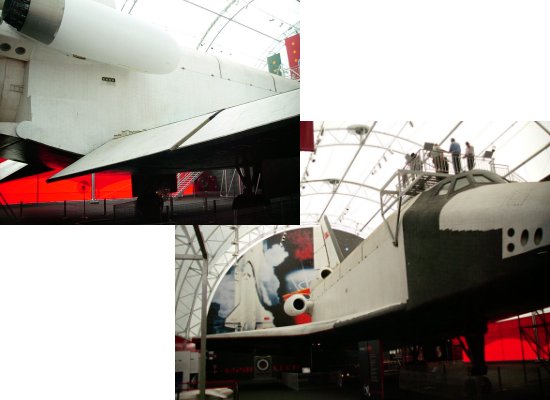
BSC also organized an ambitious plan to take the OK-GLI on an extensive tour of cities throughout Australia and southeast Asia. Unfortunately, the craft was on display in Sydney for only a matter of months before poor ticket sales forced BSC into bankruptcy. With BSC unable to complete its payments on the craft, ownership of the Analog Buran reverted back to the Russian company NPO Molniya. Molniya lacked the resources to bring OK-GLI back home to Russia and sought a new owner to take responsibility for the vehicle.
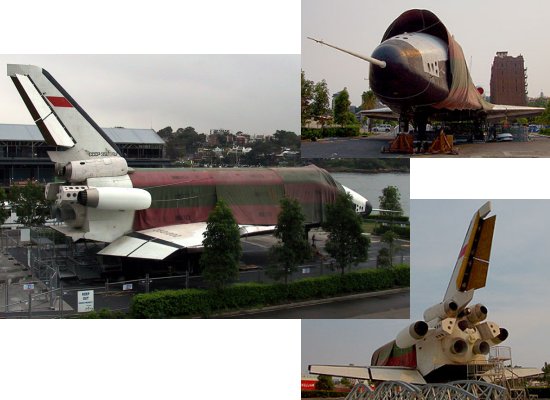
NPO Molniya then approached an American company named First FX that specializes in on-line trading on the Foreign Exchange market. First FX arranged for an auction of Analog Buran through a Los Angeles radio station. Although several bids were received, most turned out to be pranks and no legitimate buyer was willing to pay the $6 million minimum asking price. The Analog Buran was instead stored outdoors in a fenced-in parking lot in Sydney protected by nothing more than a large tarp. There the vehicle remained for a year where it fell into disrepair and was subject to repeated vandalism.
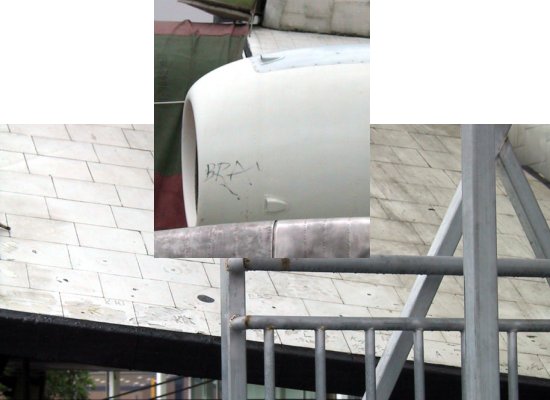
Molniya finally found a new buyer for Analog Buran in 2002 when the craft was purchased by the Singapore company Space Shuttle World Tour (SSWT). SSWT moved the vehicle to Bahrain where it was displayed at Manama Port during the 2002 Summer Festival. After the festival concluded, SSWT planned to move the vehicle to Thailand where it would become a tourist attraction. Unfortunately, SSWT also encountered financial troubles and defaulted on $320,000 in payments to NPO Molniya. Molniya brought a lawsuit against SSWT in the Bahraini courts to prevent the transfer of Analog Buran to Thailand. Pending the outcome of the legal dispute, Molniya requested that the vehicle remain in Bahrain. SSWT negotiated to place the OK-GLI in the Sitra storage yard run by Pico Logistics where it has been kept in disassembled pieces since July 2002.
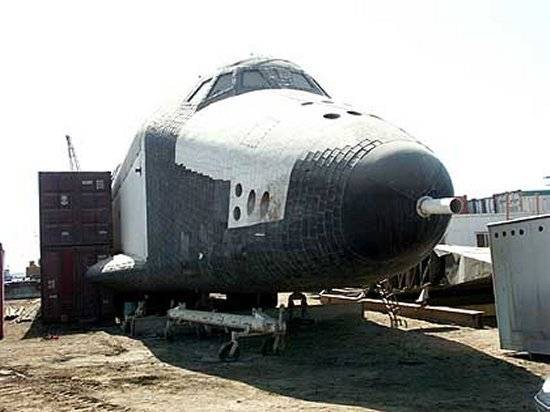
The wandering craft might have been forgotten there had it not been for a team of German journalists who stumbled upon the hulk in 2004. Their articles on the Analog Buran generated significant interest in the ill-fated Buran program. A wealthy German businessman even proposed using the OK-GLI as a traveling display at world events, but the proposition proved impractical and was dropped. Instead, the Technik Museum offered a six-figure amount to purchase the forlorn vehicle from NPO Molniya so it could be moved to Germany and put on display.
Alas, the ongoing legal battles between NPO Molniya and Space Shuttle World Tour have so far blocked the potential deal. Although three years and eight court hearings have passed since the dispute first began, no settlement has yet been reached. The Bahraini High Civil Court ruled in June 2005 that the case cannot be settled in that nation due to a clause in the contract stating that any dispute between the two parties must be referred to the London Court of International Arbitration. The case remained unresolved as of this writing, and the vehicle will remain in Bahrain until the ownership question is finally settled.

Although the condition of the Analog Buran continues to deteriorate, rumors suggest the Technik Museum has
negotiated for another piece of the Buran program for display. A third spaceworthy orbiter was under construction
when the program stopped and remained in storage at NPO Molniya's Tushino factory. Reports indicate the 40%
completed orbiter was sold to the Technik Museum as part of the same deal that included Analog Buran, and the craft
will ultimately be moved to Germany where it will be exhibited.
- answer by Jeff Scott, 14 August 2005
Update!
A visitor named Norhsham Hussin recently provided information that some version of Buran is supposed to be displayed at an exhibition in Malaysia celebrating the nation's 50th anniversary. According to the website of the Malaysia International Aerospace Exhibition 2007, Buran will be flown to Malaysia from Bahrain atop the An-225 Mriya. Buran will remain on exhibit at the Sultan Abdul Aziz Shah Airport in Subang from 5 June through 7 August 2007.
The MIAE 2007 website is not clear on which Buran vehicle will be used in the display. The site implies it is a Buran spacecraft, but it has been established in our previous article about the Buran program that the only Buran shuttle to fly in orbit was destroyed in 2002. The fact that the vehicle will be flown from Bahrain suggests it is instead the Analog Buran that will appear in Malaysia. Although it has now been confirmed Analog Buran is the craft to be displayed, it is unclear whether this development means the legal battle over ownership has been resolved or what will become of the vehicle after the Malaysian exhibition is over.
Another question is whether Analog Buran is in good enough condition to be ferried to Malaysia on the An-225, or
even if the Analog Buran was equipped to be carried externally on the An-225 in the first place. This concern has
been justified by the fact organizers were unable to obtain flight clearances to carry the Analog Buran atop the
An-225 over the various nations along the route. The vehicle will instead be moved to Malaysia by ship.
- answer by Jeff Scott, 18 March 2007
Update!
The sad saga of the Analog Buran continues! Previous updates described the sale of the vehicle to the Singapore company Space Shuttle World Tour (SSWT) that was later challenged in court by the Russian manufacturer NPO Molniya. In the meantime, the disassembled Buran remained stored outdoors in a Bahraini junkyard. Even as the case dragged on for years in the Bahrain courts, NPO Molniya made a separate deal to sell Analog Buran to the Auto & Technik Museum in Germany. It appeared the issue was finally resolved in late 2006 when the courts ruled SSWT had defaulted on its payments and NPO Molniya remained the rightful owner of the craft. SSWT appealed the decision in Bahrain's Supreme Civil Appeal Court in March 2007, but the verdict was again upheld. The sales contract was thereby terminated allowing Buran to be moved to Germany.
It now turns out that before the ownership dispute had been decided, SSWT signed a lease with the organizers of the Malaysia International Aerospace Exhibition 2007 to move the Buran to Malaysia for display during the summer. The owner of SSWT, Kevin Tan, brought another lawsuit against NPO Molniya in April claiming that he did complete the sales payments after all and the Russian company transferred ownership of the Analog Buran to him in person during a meeting in Bahrain.
Even though the question of ownership was seemingly settled, this new lawsuit has again put a freeze on any plans
to move Analog Buran out of its storage site in Bahrain. The Malaysian Exhibition has been delayed indefinitely
and the event's organizer, a company called Best Venue, is reportedly seeking a replacement attraction. NPO
Molniya and the Technik Museum continue to cooperate in fighting the SSWT claims in court, but this latest
development makes it unclear when or if Analog Buran will become a permanent display in Germany.
- answer by Jeff Scott, 14 June 2007
Update!
The Analog Buran's legal troubles have finally come to an end! The court dispute over its ownership was finally settled with SSWT ruled to be in default on half of the price the firm had agreed to pay NPO Molniya. Molniya then became sole owner of OK-GLI and immediately completed sale of the craft to the Technik Museum. Representatives of the museum quickly visited Bahrain to obtain permission for moving Analog Buran by ship from Bahrain to Europe.
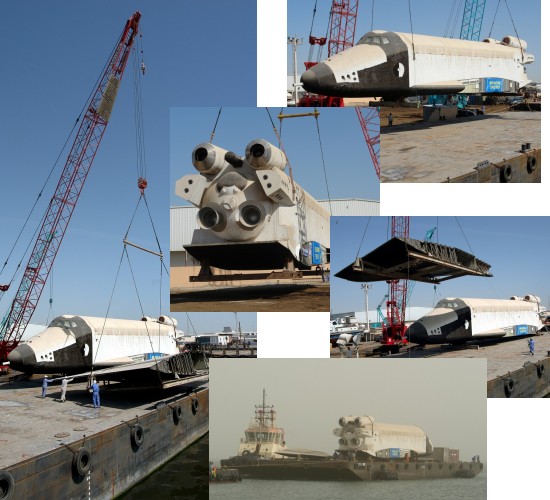
Loading commenced in early March 2008 and the Buran arrived in Rotterdam by mid-April. Analog Buran was then transported by barge and truck to the Technik Museum in Speyer, Germany, where it arrived in June.
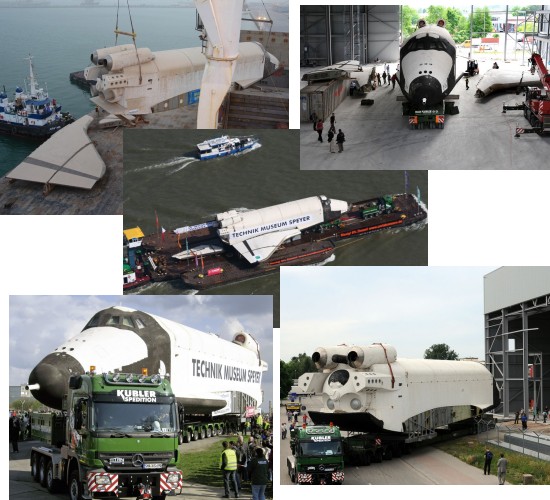
The pieces were brought into an incomplete hangar still under construction where the vehicle was reassembled and renovated in time for the facility's opening. After wandering around the world for nearly a decade with long spells deteriorating in Australia and Bahrain, Analog Buran was finally on display and opened to the German public on 3 October 2008.

As a side note, the original article referred to Germany also being in talks to purchase the third spaceworthy
Buran that had been 40% complete when construction stopped. These reports were either in error or the museum chose
not to complete negotations for this vehicle. The incomplete orbiter 2.01 remains stored outdoors at the Tushino
facility near Moscow where its condition continues to suffer.
- answer by Jeff Scott, 1 November 2008
Related Topics:
Read More Articles:


|
Aircraft | Design | Ask Us | Shop | Search |

|
|
| About Us | Contact Us | Copyright © 1997- | |||
|
|
|||